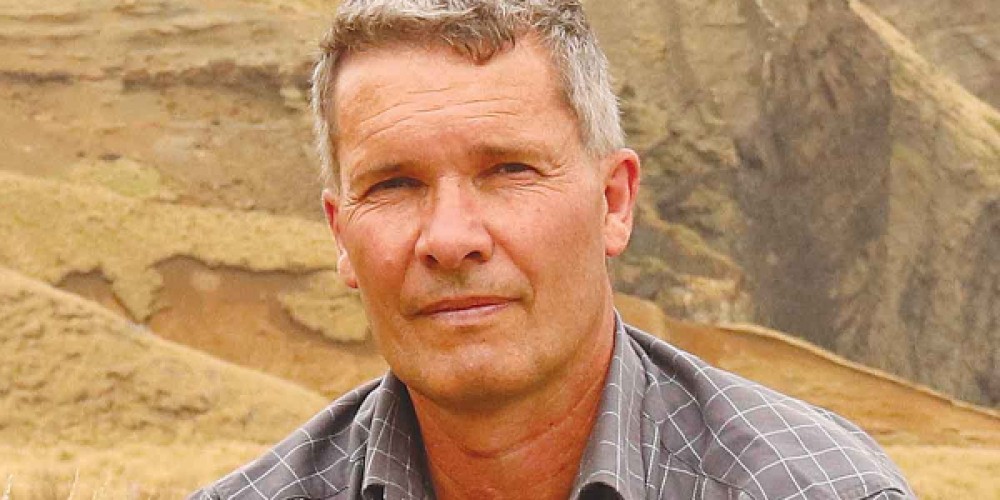A resource between regulators and reality
Added 7 months ago
By Hawke's Bay Future Farming Trust

A catchment group leader says uncertainty of funding and balancing the differing motivations of members are key challenges.
Richard Hilson, chair of the Central Hawke’s Bay catchment collective Tukituki Land Care (TLC), recently addressed 37 leaders from regional councils across New Zealand during their visit to Hawke’s Bay.
His speech was a frank and unfiltered look at the challenges catchment groups face, the motivations behind their formation, and the ongoing struggle to balance regulatory demands with the practicalities of farming.
Hilson spoke about the pressures that led to the formation of many catchment groups.
While many farmers take pride in environmental enhancements on their farms, he highlighted that the primary motivation for the formation of many Hawke’s Bay catchment groups was to cope with the growing burden of rules and regulations.
“We’re not rushing to spend money on trees and fences just to tick boxes for others. We’re farming to make a living, and for many of us, it’s also our passion. But the No 1 issue we faced was the sheer weight of rules and regulations,” Hilson said.
The Tukituki catchment spans approximately 225,000 hectares, encompassing 17 sub-catchments, each with its own unique set of challenges.
While some groups began forming organically, the complexities soon became evident.
“They needed a chairman, a secretary, a treasurer, a constitution and they needed to get incorporated,” Hilson said.
These are significant tasks, especially for farmers already stretched by their day-to-day responsibilities.
Recognising the strain this would place on individual farmers, Hilson advocated for a more consolidated approach.
“We needed to be bigger than just the Mangaonuku group or the Tukipo group. We needed to take the pressure off people,” he said.
In May 2022, after two facilitated workshops with broad catchment engagement, Tukituki Land Care was formed as “a cohesive voice for the land”, pooling resources and easing the administrative burden on individual sub-catchments.
A year later, the group secured nearly $1 million in funding from the Ministry for Primary Industries.
“We’ve only got three years of funding, so we had to hit the ground running. And that’s exactly what we’ve done”, said Hilson.
“We’ve got stream-cleaning going on, we’ve got planting, monitoring, we’ve got schools involved, nurseries. And we’ve got amazing engagement,” he said.
“I can’t believe how many people, organisations and individuals want to engage with us. We didn’t actively seek it. And it’s not just people who want to plant a few trees and grow a nursery. We’re talking about people who want to run large-scale surveys and the big-picture stuff.”
A key factor in the collective’s success has been the allocation of small demonstration grants for sub-catchment group projects.
The grants offer sub-catchments an opportunity to trial something new while gaining valuable knowledge that can be shared and replicated across the region. These grants have initiated various projects across Central Hawke’s Bay, addressing issues such as stream bank erosion, the management of willow and shingle islands, cowcress, old man’s beard, riparian planting, and the economics of milling poplars.
“We’re really, really proud of what we’ve accomplished, and I think we’ve delivered far more than we ever expected,” Hilson said.
Hilson emphasised that a driving force behind the collective’s work is the desire to leave something better for future generations.
“One of our board members said early on that whether or not we can make a difference, we’d like to make the place look better – something to be proud of for the kids. That’s driven us a lot because, if we’re honest, we’re a long way from that utopia.”
The uncertainty of future funding remains a significant concern for the organisation.
“We don’t know if we’ll get more money,” Hilson said, suggesting that the group might need to consider a subscription model to sustain its work.
This financial instability is particularly concerning given the scale of the catchment and the number of stakeholders involved.
“If we walk away from this in a year without more funding, the work will be lost. I don’t think anyone else will pick it up, and the stories will disappear.”
Asked if future funding should come from the regional council, Hilson was clear that TLC’s objectives differ from those of the council.
TLC board member Matt Wade added, “We’ve got to be independent. We can’t be seen to do your job, and I think as soon as you switch to that model of being regional council funded and being a sort of workforce for the regional council, I think farmer engagement will go out the window”.
“I think we’ve filled a vacuum between regulators and reality,” said Hilson.
“The reality for us on the farm, and for you, essentially, as regulators, is there’s a bloody big gap”.
However, Hilson said TLC has a “very good relationship” with the Hawke’s Bay Regional Council.
“We wanted to engage with them because we can’t fight them. We need to work as a team, but we also need freedom, support, and engagement that leads to outcomes.”
Hilson underscored the economic realities of farming in the region, noting that TLC’s budget of just under $1 million is a small fraction compared to the value of the land and farming businesses in the catchment.
The economic pressures on farmers are further compounded by the costs associated with regulatory compliance, such as the requirement for Hawke’s Bay farmers to complete two Farm Environment Management Plans.
“The first one we could do ourselves, and the second we couldn’t. We spent a lot of money for a consent to keep doing what we were already doing. If 1000 farmers spent $2000 a year, and the dairy farmers spend a lot more, our catchment’s spending $600,000, $700,000 a year in a three-year cycle. It’s an absolute waste of money”.
Hilson underscored the challenges faced by farmers who are deeply committed to their land but increasingly burdened by the weight of compliance.
Through collaboration and a focus on practical outcomes, TLC has not only alleviated some of these pressures but has also fostered a sense of community and shared purpose across Central Hawke’s Bay.
However, the future sustainability of such initiatives hinges on continued support and funding, without which much of the progress made could be undone.
Join the conversation
Be the first to leave a comment.
Leave a comment
All comments are reviewed before they are published on the website. Your email address will not be published.




Family-Owned Farm Embraces Regenerative Agriculture to Grow and Educate


